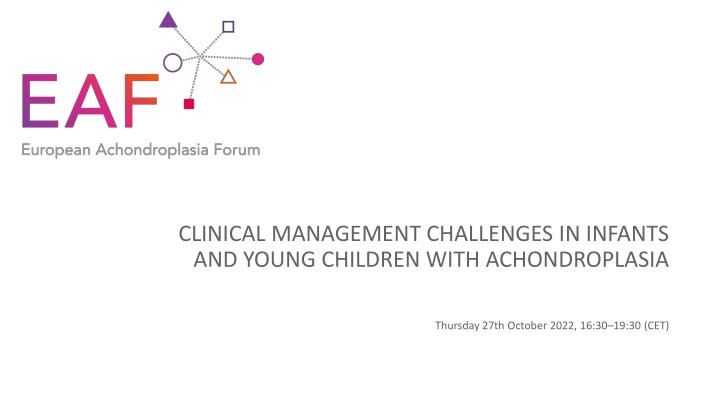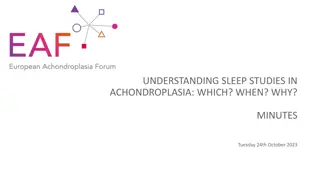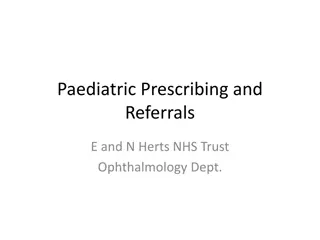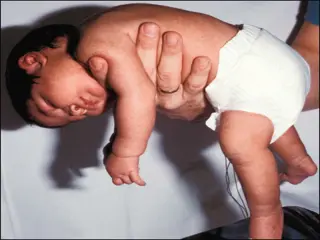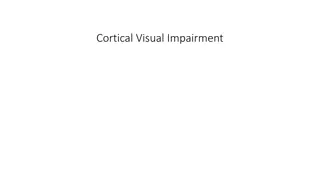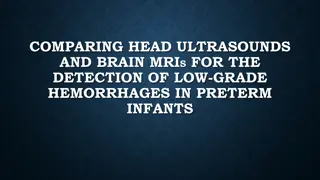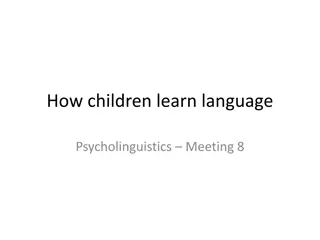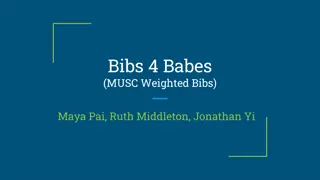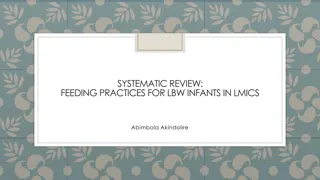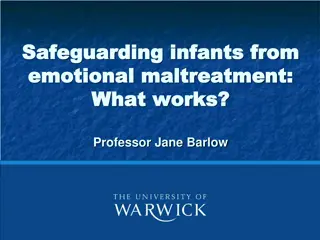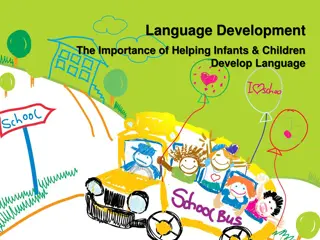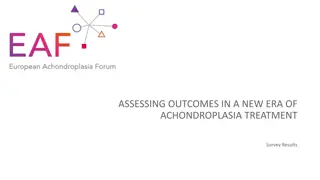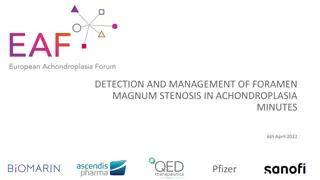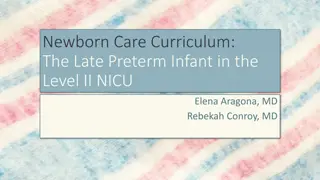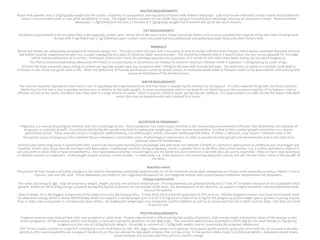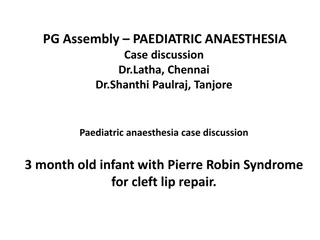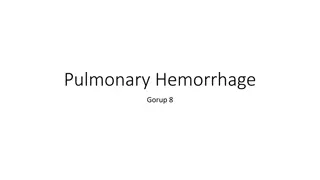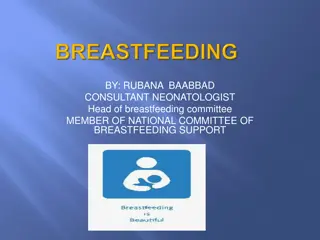CLINICAL MANAGEMENT CHALLENGES IN INFANTS AND YOUNG CHILDREN WITH ACHONDROPLASIA
Discrepancies between parent and clinician expectations, awareness of guidelines, key barriers to optimal care, and potential options for improvement in managing achondroplasia in infants and young children. Attendee overview, objectives, and agenda discussed in detail.
Uploaded on Feb 16, 2025 | 0 Views
Download Presentation

Please find below an Image/Link to download the presentation.
The content on the website is provided AS IS for your information and personal use only. It may not be sold, licensed, or shared on other websites without obtaining consent from the author.If you encounter any issues during the download, it is possible that the publisher has removed the file from their server.
You are allowed to download the files provided on this website for personal or commercial use, subject to the condition that they are used lawfully. All files are the property of their respective owners.
The content on the website is provided AS IS for your information and personal use only. It may not be sold, licensed, or shared on other websites without obtaining consent from the author.
E N D
Presentation Transcript
CLINICAL MANAGEMENT CHALLENGES IN INFANTS AND YOUNG CHILDREN WITH ACHONDROPLASIA Thursday 27th October 2022, 16:30 19:30 (CET)
Executive Summary There are discrepancies between the expectations of parents and clinicians in the outcomes of importance and the most challenging complications in infants and young children There is good awareness of guidelines for the management of achondroplasia among HCPs There are high levels of alignment with the guidelines, with some exceptions Key barriers to optimal care include healthcare system, funding, and difficulty in assembling an MDT within a single centre who are expert in their sub-specialities as well as in achondroplasia Collaboration, a network of centres or a hub-and-spoke model are potential options to improve care Over 90% of respondents rated the meeting 7 or higher for Relevance to their clinical practice Meeting their expectations Interactivity of the meeting 100% of attendees would attend a future EAF workshop 3
Attendee Overview Clinical Management Challenges in Infants and Young Children October 2022 Detection and Management of Foramen Magnum Stenosis April 2022 Management of Achondroplasia into Adulthood October 2021 Number of attendees (total) HCP PAG 51 45 6 52 47 5 33 24 9 Number of sponsors attending 8 9 12 Number of countries represented 15 17 14 4
Objectives Identify the key clinical challenges and barriers to effective management of achondroplasia in infants and young children Review the outcomes of importance in infants and young children from a clinician and family perspective Assess the application of recommendations in clinical practice Identify gaps between recommendations and clinical practice; explore the reasons for discordance 5
Agenda Considerations in infancy and early childhood From Diagnosis through Childhood: A Family Perspective In s Alves Assessing Outcomes in Infants and Young Children Encarna Guillen-Navarro and In s Alves Clinical Challenges in Infancy and Early Childhood Val rie Cormier-Daire and Marco Sessa Recommendations vs Reality Geert Mortier Overcoming Barriers to Best Practice Discussion, Encarna Guillen-Navarro How Might Therapeutic Options Impact the Clinical Management? Ekkehart Lausch 6
The majority of respondents found that the content matched their expectations and was relevant to their clinical practice How relevant was the content to your clinical practice? How well did the programme match your expectations? 5% 5% 5% 5% 5% 14.5% 38% 52% 23.5% 23.5% 23.5% 95% rated 7 or higher 90% rated 7 or higher 10 (completely) 9 8 7 6 5 1 (not at all) 10 (completely) 9 8 7 6 5 1 (not at all) 8
Respondents found the workshop interactive and 100% would be interested in attending future EAF workshops How do you rate the interactive nature of the workshop? Would you be interested in attending future EAF workshops? 10% 38% 23.5% 100% rated 7 or higher 100% interested in further workshops 28.5% 10 (completely) 9 8 7 6 5 1 (not at all) Yes No 9
